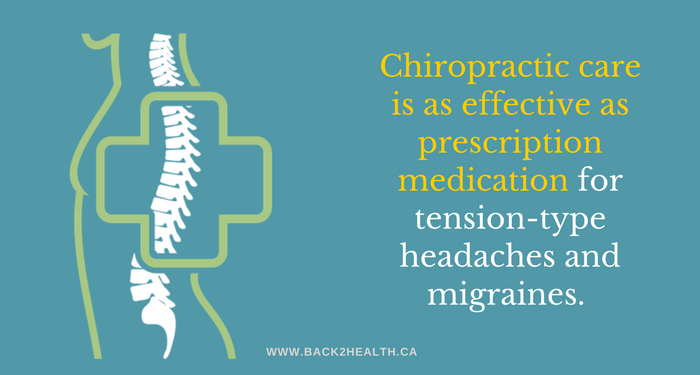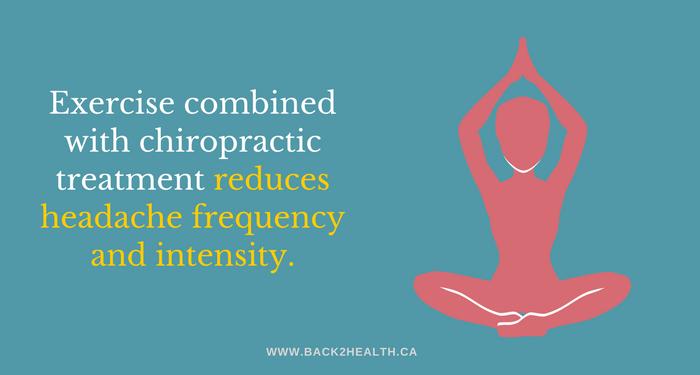If you’ve ever suffered a bad headache, you know it’s not much fun.
A mild headache makes you want to hide under your covers for comfort. A terrible headache can be totally debilitating, causing visual disturbances, nausea, vomiting, and extreme sensitivity to sound and light.
Scientists have spent decades researching why people suffer from debilitating, and sometimes chronic, headaches.
What they have found might surprise you.
A mild headache makes you want to hide under your covers for comfort. A terrible headache can be totally debilitating, causing visual disturbances, nausea, vomiting, and extreme sensitivity to sound and light.
Scientists have spent decades researching why people suffer from debilitating, and sometimes chronic, headaches.
What they have found might surprise you.
The root of your headache may not be in your head
Research shows that the root of many headaches is not necessarily in the head.
A study published by the prestigious Austrian journal Wien Med Wochenschr in 1994 found that up to 40 percent of headaches actually start in the cervical-spine, which is the spinal area of our neck.
A year before, researchers at the Centre for the Study of Spinal Health in Toronto had reached a similar conclusion. In a study of 47 patients aged 18 to 55, the Canadian researchers analyzed commonalities between the patients, all of whom suffered from tension type-headaches or migraines.
What they found was staggering.
Not only did all the patients complain from accompanying neck pain, but X-rays showed that a staggering 97 percent of those patients exhibited significant abnormal mobility in their cervical spines. In addition to this, 43 percent of the patients exhibited abnormalities in four or more segments of their necks.
These neck injuries were so common among the patients, that the researchers came to a resounding conclusion: "the neck plays an important, but largely ignored role in the manifestation of adult benign headaches," they wrote.
What's even more fascinating is that in the end, both the Austrian and the Canadian teams determined that there was a specific type of neck injury that was causing most of people's headaches: vertebral subluxations.
A study published by the prestigious Austrian journal Wien Med Wochenschr in 1994 found that up to 40 percent of headaches actually start in the cervical-spine, which is the spinal area of our neck.
A year before, researchers at the Centre for the Study of Spinal Health in Toronto had reached a similar conclusion. In a study of 47 patients aged 18 to 55, the Canadian researchers analyzed commonalities between the patients, all of whom suffered from tension type-headaches or migraines.
What they found was staggering.
Not only did all the patients complain from accompanying neck pain, but X-rays showed that a staggering 97 percent of those patients exhibited significant abnormal mobility in their cervical spines. In addition to this, 43 percent of the patients exhibited abnormalities in four or more segments of their necks.
These neck injuries were so common among the patients, that the researchers came to a resounding conclusion: "the neck plays an important, but largely ignored role in the manifestation of adult benign headaches," they wrote.
What's even more fascinating is that in the end, both the Austrian and the Canadian teams determined that there was a specific type of neck injury that was causing most of people's headaches: vertebral subluxations.
The common (and often undiagnosed) condition
Vertebral subluxations result from misaligned vertebrae in the spine that can cause chronic pain and limited mobility.
This common injury can be triggered by simple sources. Things like stress, muscle tension, minor falls, or traumatic injuries can all lead to the misalignment of vertebrae.
If we want to get rid of all those pesky headaches, we need to deal with their cause -- vertebral subluxations.
This common injury can be triggered by simple sources. Things like stress, muscle tension, minor falls, or traumatic injuries can all lead to the misalignment of vertebrae.
If we want to get rid of all those pesky headaches, we need to deal with their cause -- vertebral subluxations.
3 Steps to Stopping Headaches
1. Lay off the pain meds
Treating headaches with pain medication is like taping over a car's warning light -- you no longer see the warning, but the problem is still there.
Responsible car owners investigate the cause of the warning light as soon as it turns on. Responsible people should do the same with their bodies.
Rather than masking the pain with medication, you should look at what is actually causing your headache, especially if it's a recurring condition.
The cause of your headache may be neurological (in the brain) or physiological (caused by vertebral subluxations).
Whatever the case may be, pain medication does nothing to correct the underlying instigator of pain.
Plus, with all the negative side effects associated with pain meds - from gastrointestinal erosion to kidney disease - it's just not worth it.
Responsible car owners investigate the cause of the warning light as soon as it turns on. Responsible people should do the same with their bodies.
Rather than masking the pain with medication, you should look at what is actually causing your headache, especially if it's a recurring condition.
The cause of your headache may be neurological (in the brain) or physiological (caused by vertebral subluxations).
Whatever the case may be, pain medication does nothing to correct the underlying instigator of pain.
Plus, with all the negative side effects associated with pain meds - from gastrointestinal erosion to kidney disease - it's just not worth it.
2. See a chiropractor
Doctors of chiropractic can successfully correct vertebral subluxations with safe, gentle and precise maneuvers. These maneuvers, which are called chiropractic adjustments, restore movement and alignment to the dysfunctional vertebrae.
Scientific research shows that chiropractic adjustments slash neck pain and headaches.
A literature review published in the Journal of Manipulative and Physiological Therapeutics showed that chiropractic care was as effective as prescription medication for tension-type headaches and migraines.
By helping realign the vertebrae, doctors of chiropractic can fix vertebral subluxations and eliminate the cause of nasty headaches.
Scientific research shows that chiropractic adjustments slash neck pain and headaches.
A literature review published in the Journal of Manipulative and Physiological Therapeutics showed that chiropractic care was as effective as prescription medication for tension-type headaches and migraines.
By helping realign the vertebrae, doctors of chiropractic can fix vertebral subluxations and eliminate the cause of nasty headaches.
3. Combine exercise with your chiropractic treatment
Chiropractic care combined with moderate exercise may be even more effective than chiropractic care alone for headache relief.
In one study, 200 patients with chronic headaches spent six weeks in one of four groups: chiropractic care, exercise, both, and no-care.
Researchers measured for a change in headache frequency, intensity and duration, medication intake, pain on neck movement, upper cervical joint tenderness, neck flexibility and posture.
After one year, the group with the highest number of patients who enjoyed a reduction in neck pain and headache frequency and intensity was the combined therapy group. This allowed the researchers to conclude that "manipulative therapy and exercise can reduce the symptoms of cervicogenic headache."
In one study, 200 patients with chronic headaches spent six weeks in one of four groups: chiropractic care, exercise, both, and no-care.
Researchers measured for a change in headache frequency, intensity and duration, medication intake, pain on neck movement, upper cervical joint tenderness, neck flexibility and posture.
After one year, the group with the highest number of patients who enjoyed a reduction in neck pain and headache frequency and intensity was the combined therapy group. This allowed the researchers to conclude that "manipulative therapy and exercise can reduce the symptoms of cervicogenic headache."
Why wait?
Just as you wouldn't want to wait for painful cavities to visit the dentist, or vision problems to visit the optometrist, why wait for painful vertebral subluxations (and their accompanying headaches) to visit the chiropractor?
During regular chiropractic treatments, doctors of chiropractic focus on ways to prevent head pain altogether.
Schedule an appointment today, and avoid those nasty headaches!
~ Dr. Guenette & Dr. Hennessy
During regular chiropractic treatments, doctors of chiropractic focus on ways to prevent head pain altogether.
Schedule an appointment today, and avoid those nasty headaches!
~ Dr. Guenette & Dr. Hennessy





 RSS Feed
RSS Feed
